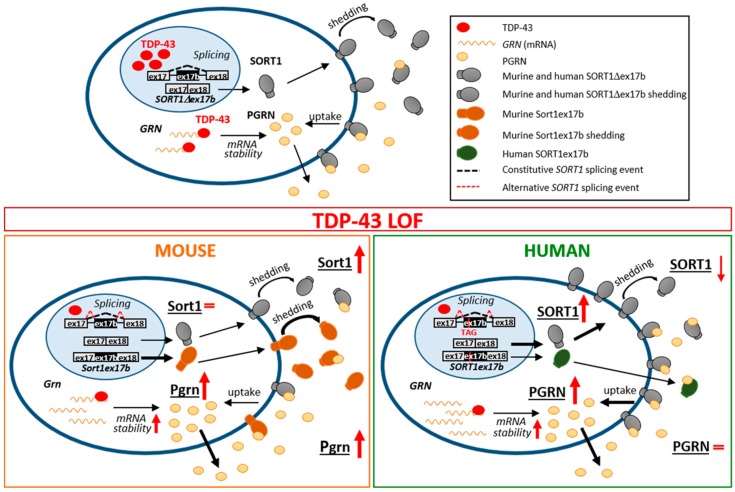Figure 6.
Proposed model for TDP-43 LOF effects on the PGRN–SORT1 axis in murine and human neuronal cells. In the nucleus, TDP-43 represses the inclusion of SORT1ex17b, an intronic exon cassette, while, in the cytoplasm, it binds to the Progranulin 3′UTR, decreasing its mRNA stability (upper panel). In the condition of TDP-43 LOF, intracellular progranulin protein increases in both cell models, while the secreted levels are upregulated in murine cells and unchanged in human ones (lower panels). We speculate that this difference is due to TDP-43-dependent regulation of gene expression and splicing of the Sortilin gene. Loss of TDP-43 promotes the inclusion of SORT1ex17b. While this alternative splicing event becomes prevalent in mice with the synthesis of a functional isoform more prone to shedding and to be released (left panel), it is rare in humans where the resulting isoform is instead truncated and not anchored to the membrane [21] (right panel). Moreover, in human cells, the observed increase of intracellular SORT1 protein (soluble and transmembrane) is likely to favor PGRN uptake, thus accounting for the differences in progranulin bioavailablity between mice and humans. Arrow thickness indicates upregulated or downregulated events compared to the physiological condition in the upper panel; red arrows indicate TDP-43 LOF effects.

